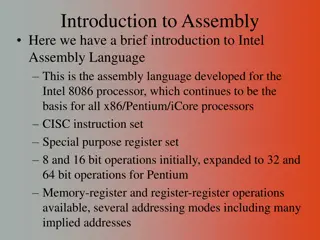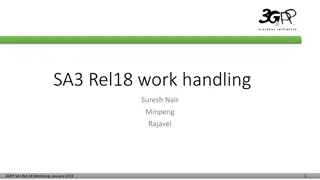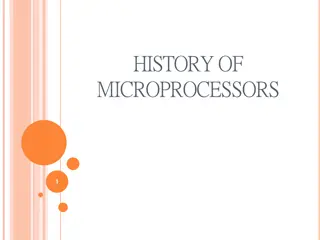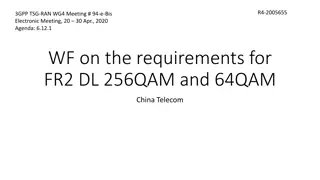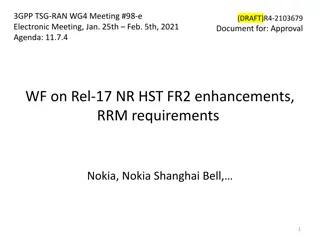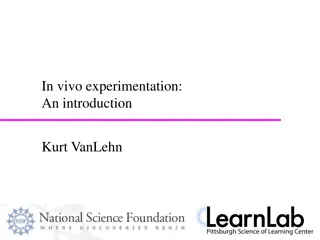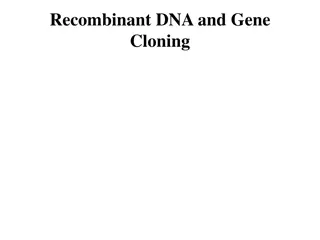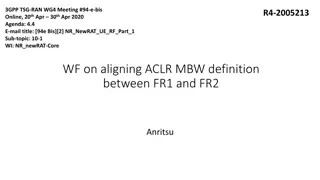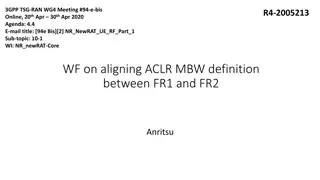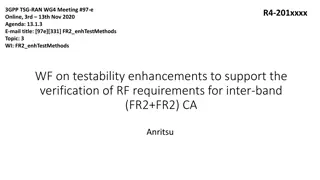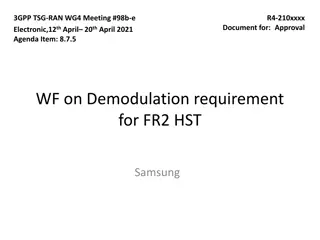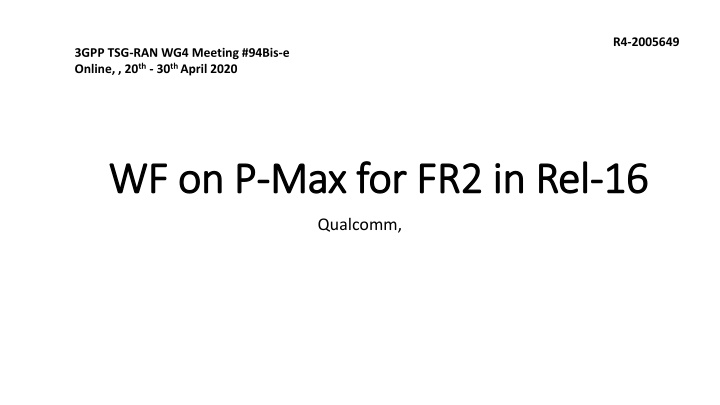
Introduction of p-Max Functionality in NR-DC on FR2 Networks
Explore the introduction of p-Max functionality in NR-DC on FR2 networks for regulating UE transmit power. Discussions involve the necessity of p-UE-FR2, technical feasibility of EIRP and TRP limitations, and the way forward for implementing p-Max. Various companies like Intel, Huawei, and vivo are encouraged to study and present motivations for the implementation. Stay updated with the latest developments in RAN2 and RAN4 discussions on this issue.
Download Presentation

Please find below an Image/Link to download the presentation.
The content on the website is provided AS IS for your information and personal use only. It may not be sold, licensed, or shared on other websites without obtaining consent from the author. If you encounter any issues during the download, it is possible that the publisher has removed the file from their server.
You are allowed to download the files provided on this website for personal or commercial use, subject to the condition that they are used lawfully. All files are the property of their respective owners.
The content on the website is provided AS IS for your information and personal use only. It may not be sold, licensed, or shared on other websites without obtaining consent from the author.
E N D
Presentation Transcript
R4-2005649 3GPP TSG-RAN WG4 Meeting #94Bis-e Online, , 20th - 30th April 2020 WF on P WF on P- -Max for FR2 in Rel Max for FR2 in Rel- -16 16 Qualcomm,
Background for this issue RAN2 has introduced new parameter p-UE-FR2 and informed RAN4 with LS text Introducing a new parameter p-UE-FR2 in the RRCReconfiguration message to configure the total maximum transmit power to be used by the UE across all cell groups for NR-DC on FR2. In addition p-Max (p-NR-FR2) is not read by FR2 UE. TS 38.331 says: if p-Max is present on a carrier frequency in FR2, the UE shall ignore the field and applies the maximum power according to TS 38.101-2 [2] mentioned that A P-Max limitation on FR2 configured maximum output power will be further study for Rel- 16, RAN4 will inform RAN2 the decision once we have an agreement. No discussion on implementing p-Max has occurred in RAN4 for Rel-16 [1] R4-2004058, Discussion on the necessity of p-UE-FR2, vivo, Intel, RAN4#94Bis-e [2] R4-1910262, LS on FR2 [Pmax and] cell selection, Huawei, RAN4#92 [3] R4-2003363, LS on power control for NR-DC, vivo, RAN2, RAN4#94-e-Bis
Background for p-Max introduction In previous discussion it was not clear if EIRP or TRP would be feasible to use to for limiting maximum output power for UE Limiting EIRP was seen difficult since UE is not in control of the E-field shapes under presence unknown objects and sidelobes may not be characterized TRP was indicated as technically feasible way but if that satisfied the need was not clear Core reason for introducing p-Max functionality was not presented so conclusion was difficult Regulatory, MPE, UE thermal, maximum limit Network functionality, Handovers
Way Forward Companies are encouraged to study how p-Max functionality can be implemented and analyse especially accuracy of the proposed solution Companies participating Intel, vivo, Huawei Companies are encouraged to present motivation for introducing p-Max Target is to conclude how the requirement can be captured to ensure implementation is usable Companies in discussion Nokia, Ericsson, NTT Docomo [Send Reply LS to RAN2 to inform them on the status and RAN4 would have further discussion on this issueRAN2 CR on p-UE-FR2 adding should not implemented before RAN4 have conclusion.]

